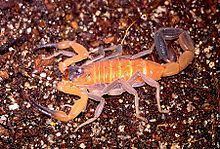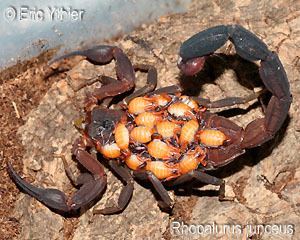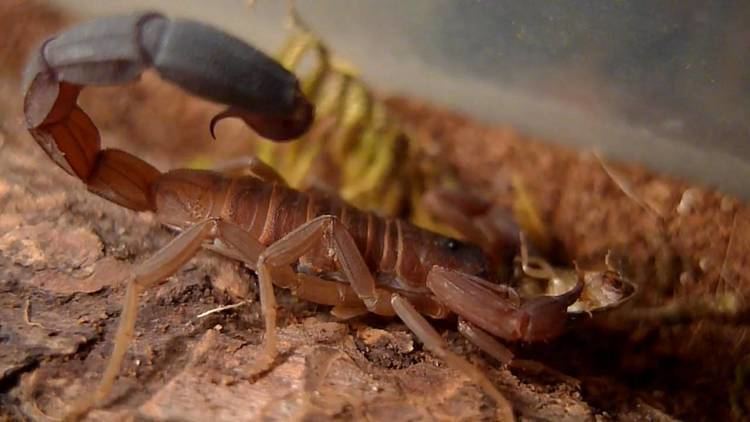Order Scorpiones Genus Rhopalurus Higher classification Rhopalurus | Scientific name Rhopalurus junceus Rank Species | |
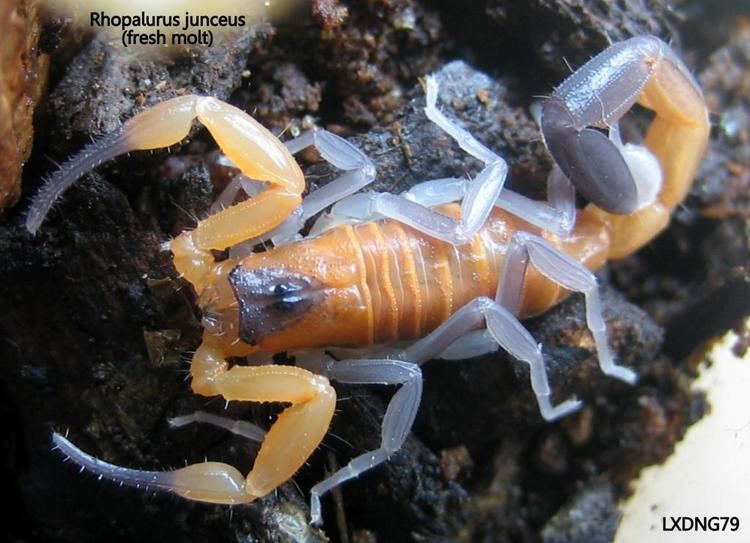 | ||
Similar Rhopalurus, Scorpion, Centruroides, Hottentotta, Parabuthus | ||
Rhopalurus junceus
Rhopalurus junceus, the red scorpion or blue scorpion, is an endemic species, one of 36 different types of scorpion found on the islands of Cuba and Dominican Republic and parts of Central America. It is called "blue scorpion" due to the peculiar blue tone on its tail and stinger; it is also known as "red scorpion" because it has a reddish dark body.
Contents
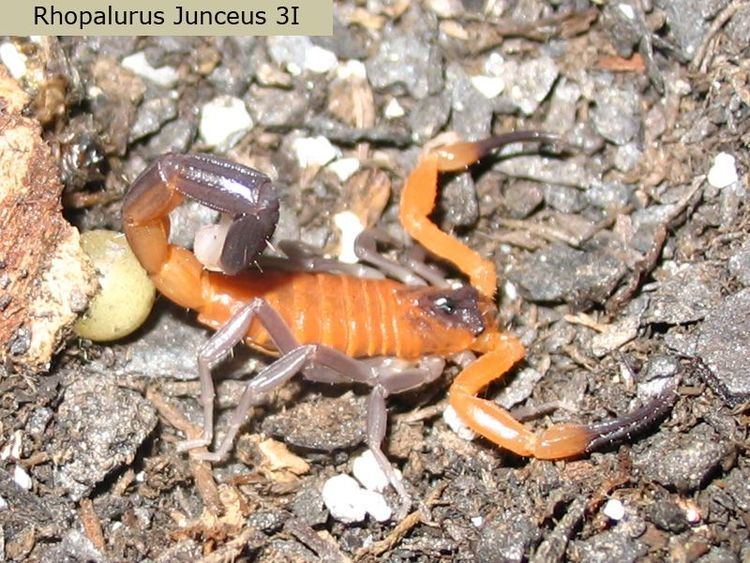
Habitat
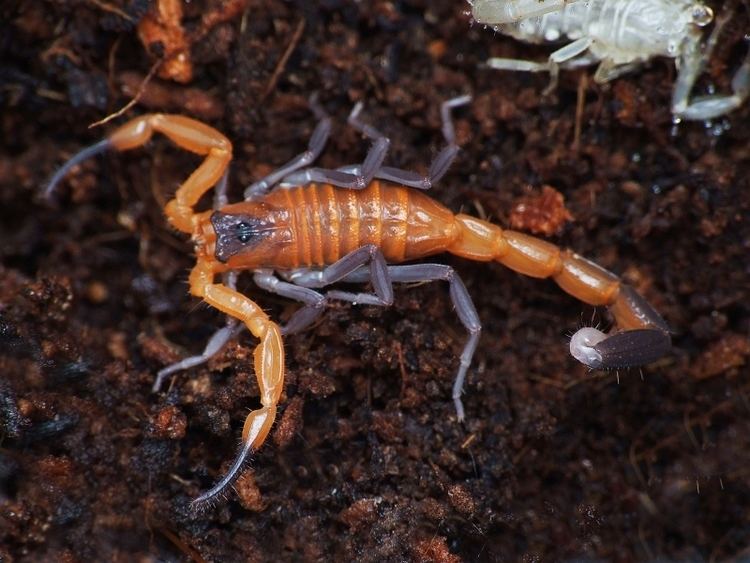
Rhopalurus junceus can inhabit ecosystems ranging from savanna forests to semi-desert areas. They are commonly found under rocks or fallen trees and throughout the epiphytic vegetation within the Bromeliads.
Description
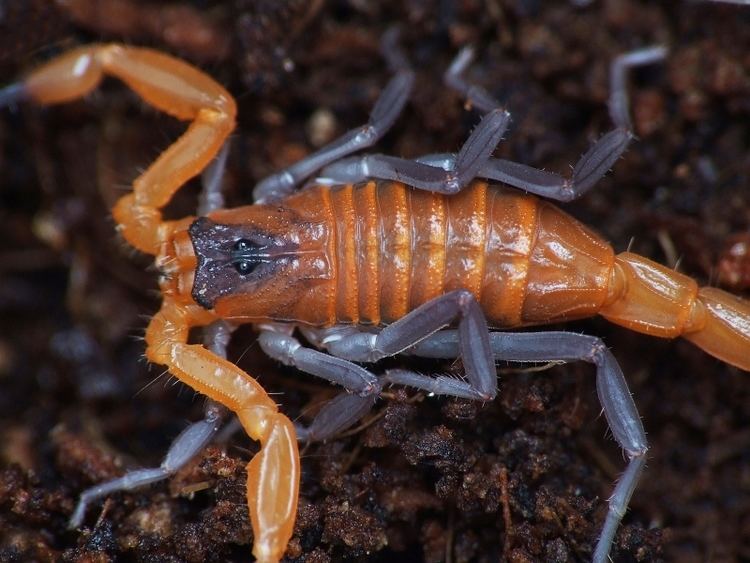
Full-grown adults reach 55–100 millimetres (2.2–3.9 in) in length. The body is yellowish brown, pink, orange, with a red or purple tail, a single stinger and the eight limbs darker, burgundy, purple or blackish, with a black triangle intercular. R. junceus has a life expectancy of three to five years, although lack of food results in only 15% reaching adulthood. Every year, hundreds of persons are stung by this scorpion in Cuba, but these stings are not dangerous because the venom has an LD50 of 8.0 mg / kg, which is far more venom than is carried in the stinger.
Escoazul
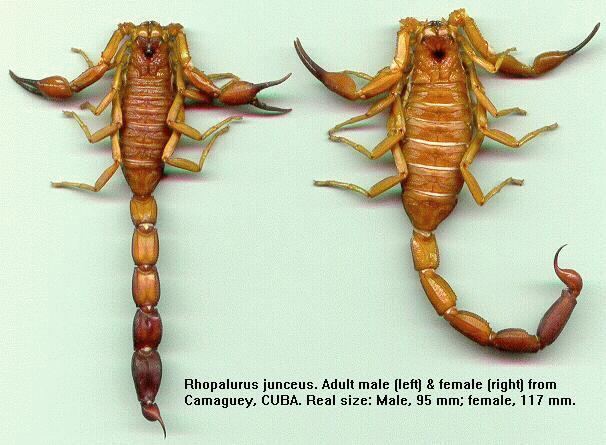
Escoazul or escozul (from escorpión azul - in Spanish: blue scorpion - the name by which it's known in Cuba) refers to a mixture used in Cuban traditional medicine as an anti-inflammatory. The composition may vary, but always contains a diluted dose of Rhopalurus junceus venom.
The Rhopalurus junceus poison, coloured blue, contains a toxin whose composition and structure is still unknown. The escozul gained fame when in Latin America and Europe was spread, through internet, the voice of a possible antineoplastic effect. After that, the Cuban Government started some studies, all in preliminary stages, in order to discover its real effects.
